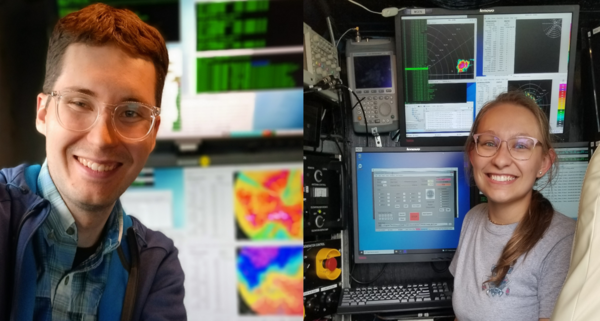
Seminar: Graduate Students (UIUC) Eddie Wolff and Leanne Blind-Doskocil
- Event Type
- Seminar/Symposium
- Sponsor
- Professor Larry Di Girolamo
- Location
- 2079 NHB
- Date
- Mar 28, 2023 3:30 - 5:00 pm
- Views
- 35
Leanne Blind-Doskocil's Presentation:
Characteristics of Tornadic and Nontornadic QLCS Mesovortices during PERiLS
The low predictability of tornadoes spawned by quasi-linear convective systems (QLCSs) is a long-standing forecasting challenge. QLCS tornadoes often develop rapidly, are shallow in nature, and lack long lead-time radar signatures, making it difficult to anticipate when and where the greatest tornado threat will occur. QLCS tornadoes typically form within a parent vortex known as a mesovortex (MV); however, not all mesovortices are tornadic, which adds to the forecasting challenge. This research uses observations collected during the Propagation, Evolution, and Rotation in Linear Storms (PERiLS) field campaign to examine characteristics that could differentiate tornadic (TOR), wind-damaging (WD), and non-damaging (ND) QLCS MVs. A total of 19 QLCS MVs passed through the University of Illinois Flexible Arrays of Radars and Mesonets (FARM) C-band on Wheels (COW) radar domain during the four PERiLS intensive observing periods (IOPs). These MVs have been manually cataloged using the lowest elevation angle of the WSR-88D and the COW radar data. Selected mesovortex attributes, such as maximum rotational velocity (Vrot) and MV diameter, have been quantified. The MVs were analyzed during their entire lifetime and during the time before the MV first produced damage or before a warning was issued if it was a ND MV. From these cases, TOR MVs have stronger Vrot values throughout their whole lifetime; however, when examining the time before the first report/warning was issued, TOR and WD MVs have similar Vrot values. To determine if these radar-detected MVs are also reflected at the surface, meteograms have been created using data from ground-based pods that sampled the MVs. Results from these data show a sudden shift in the wind direction, a maximum 1 second wind gust of 15 kt, and a drop in mean sea-level pressure associated with the MVs. There is one QLCS MV that was only observed at the lowest elevation scan in the WSR-88D and not by the COW radar during a part of its lifetime. This MV has been tracked in time at all radar elevation angles to examine how the depth of this MV evolved during its lifetime.
Eddie Wolff's Presentation:
Examining the role of deep convective updrafts in QLCS tornadogenesis using observations and real-world modeling
Tornadoes that form from quasi-linear convective systems (QLCSs) are especially difficult to predict and identify, leading to lower situational awareness and shorter warning lead times. QLCS tornadoes are especially prevalent in the Southeast United States and societal factors within this region make these tornadic QLCSs especially devastating to the communities they impact. It is hypothesized that severe (either tornadic or damaging wind-producing) circulations that strengthen rapidly tend to be associated with deep convective updrafts. To address this hypothesis, local storm reports and storm surveys during the second Intensive Observing Period of the 2022 Propagation, Evolution, and Rotation in Linear Storms (PERiLS) field campaign are used to identify low-level circulations within QLCSs that are tornadic or damaging wind-producing. These circulations are then compared to upper-tropospheric features, such as overshooting tops (OTs), which are calculated with an OT identification algorithm using 1-minute resolution mesoscale sector data from the GOES-16 satellite, as well as strong updrafts, identified with multi-radar multi-sensor (MRMS) 3D mosaic reflectivity products. While the formation of OTs appears to be limited due to dependence on environmental characteristics, such as CAPE, strong updrafts identified by radar appear consistently with tornadic circulations at the surface. A real-world Weather Research and Forecasting (WRF) simulation is also utilized to explore the connection between these updrafts and the vortexgenesis process. The identification of updraft and tornadogenesis signatures within high-resolution geostationary satellite and MRMS data may ultimately help improve the nowcasting of damaging QLCSs.